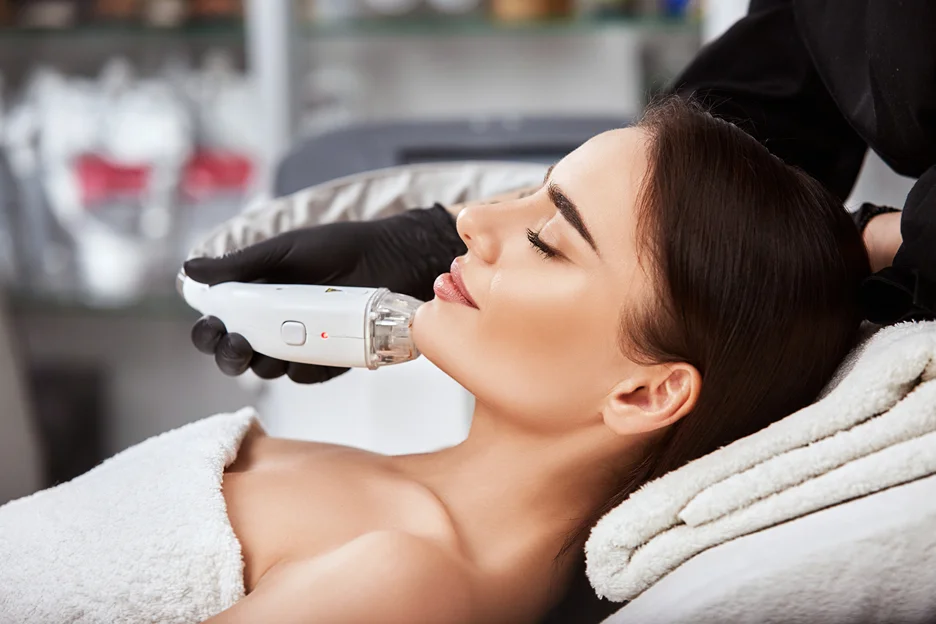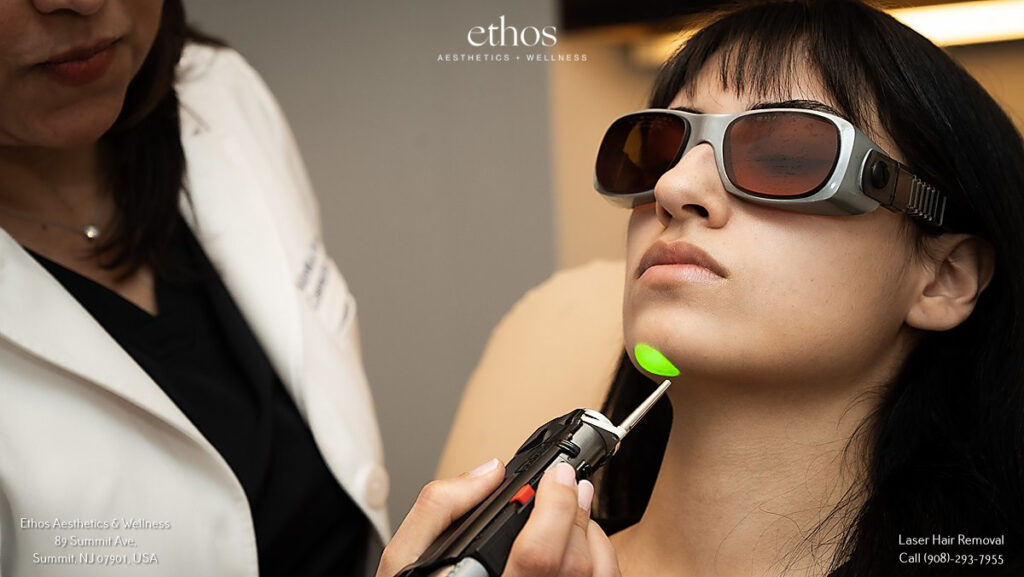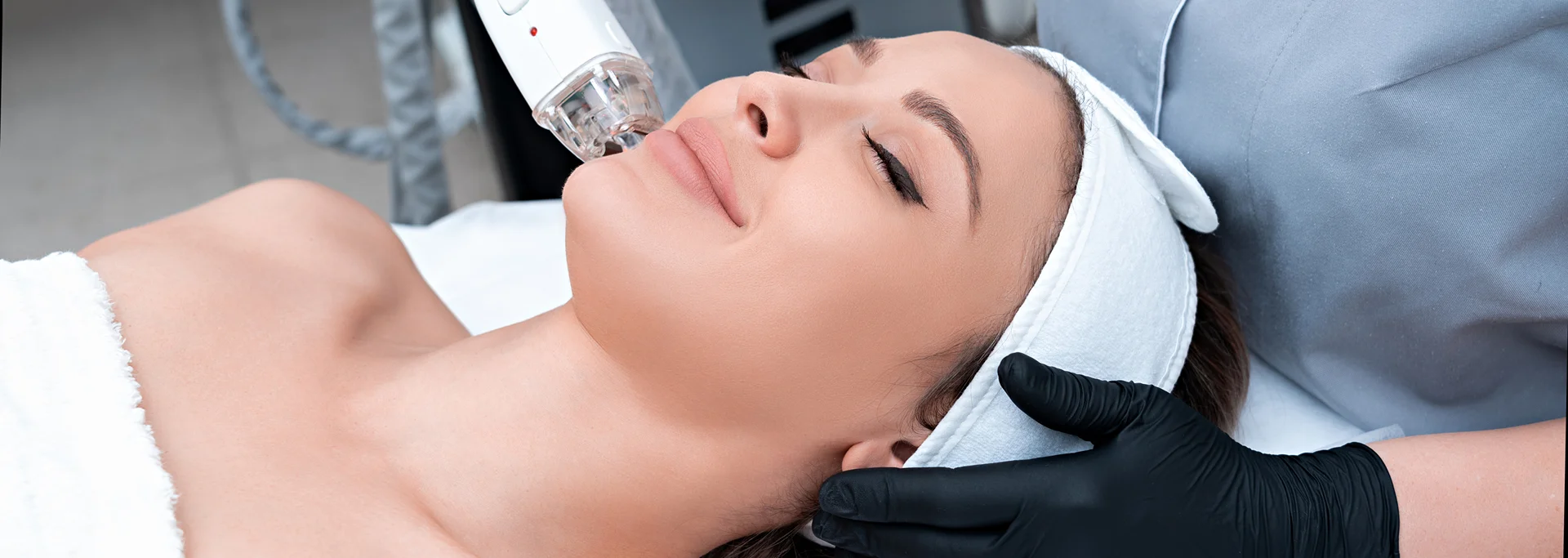acial Hair Be Gone: Everything Women Need to Know About Laser Hair Removal
Unwanted facial hair can be quite a fuss for many women. Shaving, waxing, plucking, and other hair removal methods provide only temporary relief while frequently irritating delicate facial skin. Is there a better, long-lasting solution for getting rid of facial hair? Enter laser hair removal.
Laser hair removal has become one of the most popular and effective ways for women to permanently reduce facial hair growth. The precision, speed, and long-lasting results of laser treatment make it a top choice for targeting unwanted hair on the lips, chin, cheeks, and other areas of the face.
But how exactly does laser hair removal work, and is it truly permanent? What factors lead to optimal results on the face? Let’s explore the ins and outs of laser hair removal for women’s facial hair.
What Are the Main Methods for Facial Hair Removal in Women?
Before examining laser hair removal for the face specifically, it helps to understand the most common facial hair removal options that women use:
Shaving
The least expensive and most convenient method, shaving facial hair provides only temporary smoothness, lasting just 1-3 days before stubble reappears. Frequent shaving can also lead to ingrown hairs and razor bumps on delicate facial skin.
Waxing
Waxing pulls hair directly from the follicle for longer-lasting smoothness of 3-6 weeks on the face. The process can be painful and often causes irritation, redness, and swelling. Over time, waxing can damage hair follicles and cause ingrown hairs.
Threading
This hair removal method uses twisted cotton thread to pluck out unwanted facial hair. It offers more precision than waxing but is still a temporary solution lasting up to 4 weeks. Threading can irritate and redden sensitive facial skin.
Tweezing
Plucking hairs out individually with tweezers allows for precision but can be extremely tedious for larger areas of unwanted facial hair growth. Tweezing damages hair follicles so hairs may grow back thinner over time but it is not a permanent reduction method.
Depilatory Creams
Chemical hair removal creams dissolve hair near the surface of the skin. The results only last about 1 week. Using these products too frequently can irritate facial skin.
As you can see, traditional facial hair removal methods require frequent reapplication while risking irritation, ingrown hairs, and follicle damage over time. This is where laser hair removal stands out as a long-term solution.
How Does Laser Hair Removal Work for Facial Hair?

Laser hair removal leverages concentrated beams of pulsating light to selectively target dark pigment within the hair follicles on the face. The laser light gets absorbed by the dark pigment in the hairs while largely avoiding absorption by the lighter surrounding skin.
The absorbed laser energy generates heat that damages the hair follicle, disabling its ability to regrow hair. This process is called selective photothermolysis. It allows the dark hairs on the face to be selectively targeted by laser light without burning the skin.
Performed properly, laser hair removal on the face can achieve a permanent hair reduction of 60-90% after a series of treatments. This gradual reduction takes place as growing hairs are repeatedly targeted with each session. Advanced laser hair removal systems now incorporate cooling systems and specialized treatment tips to allow safe application on delicate areas of the face.
What Factors Determine the Success of Laser Hair Removal on the Face?
While laser therapy offers dramatic facial hair reduction compared to other methods, the level of success depends on several factors:
- Skin Tone – Lasers work best at removing hair on light to medium skin tones. Darker skin is at higher risk of adverse effects like hyperpigmentation.
- Hair Color – Laser hair removal targets dark hairs most effectively. Fine, light-colored hairs respond poorly so blond, red, and white facial hair see minimal results. Blonde/red hair is harder to treat.
- Coarseness and Density – Coarse, dense facial hair is easiest to laser away permanently. Fine ‘peach fuzz’ hair is harder to remove.
- Hormones – Hormonal imbalances leading to excess facial hair growth like PCOS may require additional treatments.
- Laser Wavelength – Laser devices with wavelengths optimal for lighter skin and darker hair lead to the best facial hair removal. An expert should recommend the right laser.
- Number of Treatments – Most patients require 4-6 sessions spaced 4-6 weeks apart for significant long-term facial hair reduction.
Overall, those with fair skin and dark, coarse facial hair see the greatest success with laser hair removal treatments over time.
What Are the Benefits of Laser Hair Removal for Facial Hair?
Now that we understand how laser technology eliminates facial hair at the root, what are the unique advantages it offers compared to other hair removal methods?
- Long-lasting Results – After a series of treatments, laser hair removal provides an effective reduction of dark facial hairs. No more persistent 5 o’clock shadow!
- Less Frequent Hair Removal – Whereas shaving or waxing must be repeated weekly or monthly, properly performed laser treatments permanently destroy hair follicles so touch-ups are needed far less often.
- Precision Targeting of Hair – Laser light can selectively remove short, coarse hairs on delicate areas of the female face like the upper lip and chin. Other methods fall short in treating these stubborn spots.
- Fewer Ingrown Hairs and Irritation – Laser therapy avoids ingrown hairs and irritation that often results from shaving, waxing, and plucking the face over time. The photothermolysis process leaves the surrounding facial skin undamaged.
- Treats Hard-to-Reach Areas – Laser hair removal successfully targets awkward facial zones like the hairline, jawline, and area under the chin where hair growth tends to occur.
As you can see, laser hair removal transforms the nuisance of facial hair maintenance into an occasional touch-up treatment, offering convenient, confidence-boosting results. But are there hitches you should be mindful of?
What Are the Risks and Side Effects of Laser Hair Removal on the Face?
While laser therapy provides facial hair removal with far fewer risks than electrolysis or other methods, potential side effects do exist in the form of:
- Skin Irritation – Some redness, swelling, and tenderness can occur around the treated area for up to several days after a laser session.
- Hyperpigmentation – Darker pigmented skin has an increased risk of hyperpigmentation – light areas becoming darker – around the treatment site. Avoiding sun exposure reduces this risk.
- Hypopigmentation – On the flip side, treated areas can become lighter than the surrounding skin. This too can be minimized by avoiding sun exposure after treatments.
- Paradoxical Hair Growth – Improper laser treatment can potentially stimulate increased facial hair growth. Finding an experienced technician is key.
With an experienced laser hair removal technician, these side effects rarely occur and can be further avoided by closely following pre and post-treatment protocols.
How Should Patients Prepare for Facial Laser Hair Removal?
Preparing correctly for your laser hair removal facial treatments will help maximize results and minimize adverse effects:
- Avoid Plucking/Waxing – Tweezing, waxing, and electrolysis should not be used to remove facial hair for 4-6 weeks prior to laser sessions as this removes the hair follicle root the laser targets.
- No Sun Exposure – You should stay out of the sun and avoid any tanning beds for at least 4-6 weeks before starting laser therapy. Recent suntans absorb more laser energy, increasing the risk of side effects.
- Stop Certain Medications – Photosensitizing medications and supplements like retinoids, tetracycline, St. John’s Wort, and others may heighten sensitivity to laser light and should be discontinued prior to treatment.
- Shave Don’t Pluck – It’s okay to shave facial hair between laser sessions, just don’t pluck or wax. Shaving leaves the follicle intact for the laser to target.
- Apply SPF 30+ Daily – Use broad-spectrum sunscreen with at least SPF 30 on your face each day after your treatment to prevent any hyperpigmentation.
Following these steps helps patients get the safest, most successful laser hair removal results on the delicate facial area.
What Aftercare is Needed Following Facial Laser Sessions?
Proper aftercare improves healing, minimizes risks of complications, and prepares the skin for subsequent laser hair removal treatments:
- Use ice packs – Applying wrapped ice packs to lasered facial areas for 10-15 minutes at a time can provide soothing relief and reduce swelling.
- Apply aloe vera gel – The cooling, anti-inflammatory properties of aloe vera gel help calm irritation from laser therapy.
- Avoid sun exposure – No sun for at least 2 weeks post-treatment avoids hyperpigmentation. Use SPF 30+ sunscreen if you must be outdoors.
- Limit exposure to irritants – Steer clear of products containing glycolic acids, retinoids benzoyl peroxide, or abrasives for 1 week after a laser session as these can further irritate the skin.
- Use gentle cleansers – Cleanse your face very gently using a sensitive, fragrance-free cleanser for 1-2 weeks after laser treatment. Avoid scrubbing or exfoliating.
- Apply soothing creams – Hydrating, fragrance-free moisturizers, and aloe vera creams help calm any lingering irritation and promote healing.
- Allow natural exfoliation – Treatments cause dead skin and crusting to naturally slough off lasered areas over 7-14 days. Don’t pick at these areas to allow new skin to regenerate.
- Don’t wear makeup – Give your skin a break from makeup for at least 3 days after laser hair removal treatments. Mineral makeup with titanium dioxide/zinc oxide is gentler when reapplying.
- Wear sunscreen – SPF 30 or higher sunscreen should become a daily facial habit for at least 2 weeks following each laser session. Prevent pigmentation.
- Consider vitamins C and E – Studies show antioxidants like vitamins C and E applied topically may help soothe inflammation and speed healing after aesthetic laser treatments.
- Watch for infection – Consult your technician if any treated facial areas become severely inflamed, ooze pus, or develop a fever as antibiotics may be needed.
How Much Does Laser Hair Removal for the Face Cost?
The price of laser hair removal for the face varies based on:
- Clinic location – Major metropolitan areas charge higher rates
- Expertise level of the technician – Board-certified dermatologists and plastic surgeons cost more
- Type of laser devices used – Advanced laser machines are more expensive for clinics to acquire
- Number of treatments needed – Larger facial surface areas require more sessions
On average, patients pay between $150 to $400 per facial laser hair removal session. Here’s a more detailed breakdown of the latest costs you can expect:
| Facial Area Treated | Average Cost Per Session |
| Small areas (upper lip, chin, cheeks, neck) | $60 – $300 |
| Full face | $250 – $650 |
| Average cost across all facial areas | $150 – $400 |
Most patients require between the usual range of sessions mentioned above for optimal semi-permanent reduction, putting the total cost range between $600 and $3600.
Many clinics offer bundled pricing packages at discounted rates for multiple laser hair removal treatments. While pricier than other temporary options, laser therapy provides lasting facial hair removal that outweighs the upfront costs over time for many women.
How to Choose the Ideal Laser Facial Hair Removal Clinic for Females?
With so many providers offering facial laser hair removal, it can be daunting to choose where to go. Here are tips on selecting a quality laser hair removal provider:
- Search for licensed dermatologists and plastic surgeons specializing in laser therapy. Their advanced expertise and training ensure safe, effective treatment.
- Look for clinics using the latest laser technology like ND:YAG, Diode, and Alexandrite lasers proven optimal for facial hair on lighter skin tones.
- Read online reviews detailing patients’ first-hand experiences and treatment results at nearby clinics.
- Schedule consultations to view facilities in-person and meet with potential technicians.
- Ask about their specific experience with facial laser hair removal and how they minimize risks like burns.
- Confirm they provide complimentary touch-up treatments if some regrowth occurs.
- Avoid steeply discounted deals or groupons, which may reflect lower quality equipment and staff.
Taking time to carefully vet providers ensures you get the safest, most satisfactory facial laser hair removal experience.
Conclusion

In summary, laser hair removal offers women a long-term solution to eliminating undesirable facial hair growth without the hassles of daily shaving and the risks of irritation from waxing and plucking. The precision targeting of laser light can treat delicate areas of the female face safely and effectively.
While results depend on skin tone, hair color, hormones, and other factors, patients with the right profiles can achieve close permanent hair reduction when treated by a trained professional with advanced laser technology.
If unwanted mustaches, lip hair, chin hair, and other embarrassing facial growths aren’t your thing, explore reputable laser hair removal clinics in your area today. Achieve smooth, stubble-free skin on your face once and for all with the help of Ethos Spa.
Schedule a free consultation to meet our specialists now, and achieve the smooth, hair-free complexion you desire!







